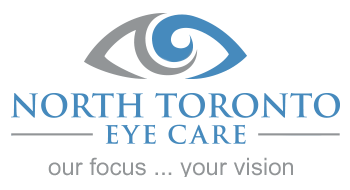Caring for and maintaining your eye health is crucial – your eyes are a vivid portal to your world. Clear vision is something that we can easily take for granted. As we age, it’s imperative to put extra effort into the health of your eyes in order to avoid the risk of vision loss.
Age-related macular degeneration is a disease that causes your central vision to blur due to damage of the macula, which is the part of your eye that helps you see the intricate detail of what you’re focusing on. Since AMD does not affect your side and peripheral vision, it does not lead to complete blindness, but does make it harder to read, drive, and recognize faces, all central-vision focuses.
To help you better understand how to protect your eyes, here are 5 facts that you need to know about age-related macular degeneration:
1. AMD is extremely common. According to the Canadian National Institute for the Blind, one of the leading causes of vision loss and blindness in North American adults over 55 is age-related macular degeneration, or AMD. Out of the 5.5 million Canadians with eye conditions that could lead to vision loss, 1.4 million of those Canadians are living with AMD.
2. There are two types of macular degeneration—wet and dry.
- Dry – this is the most common type and is much more gradual. As you get older, the macula’s cells start to break down, turning into waste deposits that build up in the back of the eyes. Dry AMD affects central vision over time.
- Wet – this is less common, but more severe. Wet AMD occurs when abnormal blood vessels grow in the back of the eye, which easily leak fluid under the macula and can lead to a rapid decline of vision.
3. Glasses cannot correct AMD. Though it may seem that a blurred vision spot or sense of obstruction could be fixable with glasses, this is unfortunately nothing that can be corrected with glasses. Over time, the blurred area will often increase in size and straight lines could begin to look wavy or distorted. There is no pain associated with AMD, so it can be hard to diagnose, especially when often your first instinct is to try to correct blurry vision with glasses or contacts.
4. The risk of developing AMD increases with age. If you take care of your overall health, you can significantly decrease your risk of developing AMD. Smokers, lack of physical activity, and individuals who have had heavy exposure to UV rays are more at risk. Medical conditions such as high blood pressure, obesity, and genetic history of age-related macular degeneration have all been connected to a higher risk of development. People with diets high in unhealthy fats, sugar, and cholesterol are more likely to be affected as well.
5. Lifelong UV protection and healthy lifestyles play a key role in preventing AMD. Keep your blood pressure down. Replace unhealthy foods with vitamins, minerals, healthy fats, and whole grains. Quit smoking. All of these will help you prevent the development of AMD. Regular eye exams are also crucial to help maintain regularity and discover early detection of age-related macular degeneration, especially since there aren’t symptoms until it has progressed. Take care of yourself and your vision will follow!
Age-related macular degeneration doesn’t have to be scary – take control of your eye health and live your life with clear vision. Here at North Toronto Eye Care, we are dedicated to providing you with the safest, most advanced treatment options. Our team is composed of renowned eye care specialists who utilize the latest technology for treatment of complicated eye diseases. For more information on age-related macular degeneration, contact us today!
